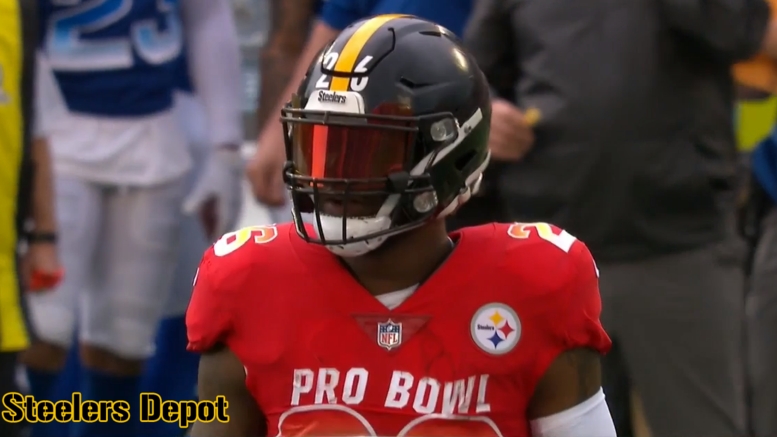Le’Veon Bell is going to be one of the biggest storylines for the Pittsburgh Steelers until his situation is resolved one way or another, that is just a plain and simple fact. It’s been such a topic of conversation on a daily basis that many people are simply tired of hearing about it.
Joel Corry recently took a stab at exploring what the options are for the Steelers as it pertains to Bell, as Dave Bryan talked about yesterday, but there was another element in Corry’s article that I found to be more interesting. And anybody who has regularly read my stuff knows it’s a topic I’ve been curious about.
In the middle of the article was included a graph that demonstrates in hard numbers the decline in value of the running back position over the course of the past seven years, which would seem to be in direct opposition to logic given that the salary cap has dramatically risen since that time.
Corry took the average value of the top five running back salaries on long-term contracts and also noted the number of running backs on contracts averaging $10 million or $7 million per season. There is a clear and steady decline over the entire span.
The 2012 season represented the high-water mark for the running back position, with the top five long-term salaries averaging $10.8 million per season with an average length of contract of five years. There were two running back (Adrian Peterson and Chris Johnson) making at least $10 million, and eleven running backs making at least $7 million.
Fast forward to the 2017 season and there are no running backs on long-term deals earning $10 million per season, though Bell obviously could have (and still could be) one of them. And there are only three running backs averaging at least $7 million per season. The average salary has fallen to just $7.2 million, a $3.5 million drop.
How could the price of a top-shelf running back drop by a third when the salary cap has risen by 47 percent in the same amount of time? The salary cap in 2012 was $120.6 million and has steadily risen all the way up to $177.2 million for the 2018 season, and yet as a whole the running back position, in contrast to every other position, has seen a devaluation rather than a proportional increase.
When Peterson and Johnson received their contracts seven and eight years ago, they were among the top five non-quarterback salaries in the NFL. Now there is not a running back who is even close to that, as Corry points out. Justin Houston’s nearly $17 million average salary ranks fifth and even Bell’s franchise tag falls more than $2 million short of that mark.
To be clear, this isn’t just about Bell. This is about the running back position as a whole. There are arguments that are regularly made that strive to justify not paying the position. I think the numbers show that teams are buying that argument more and more, but I’m still curious to see how the situation differs in two or three years’ time.








